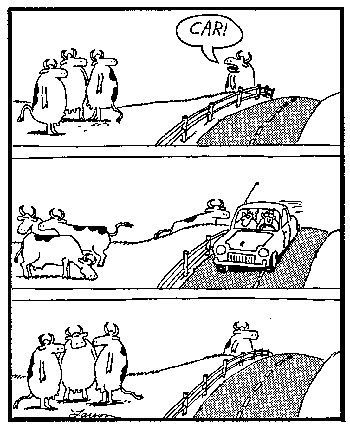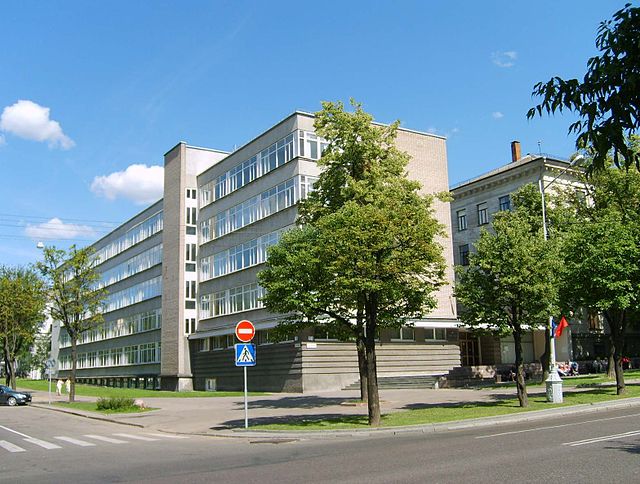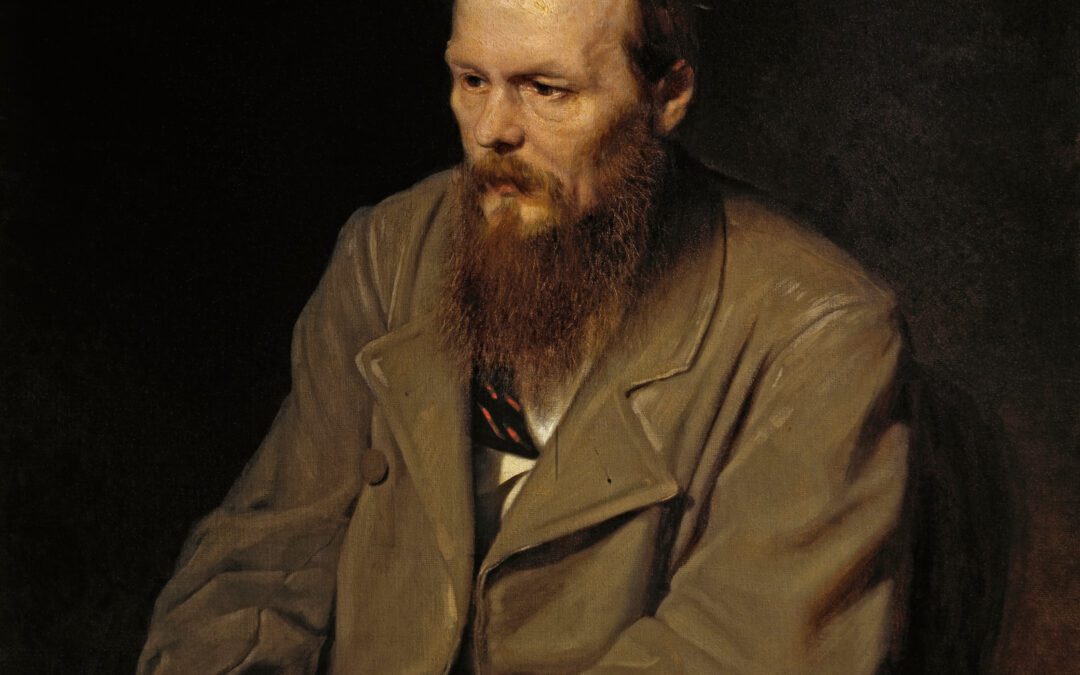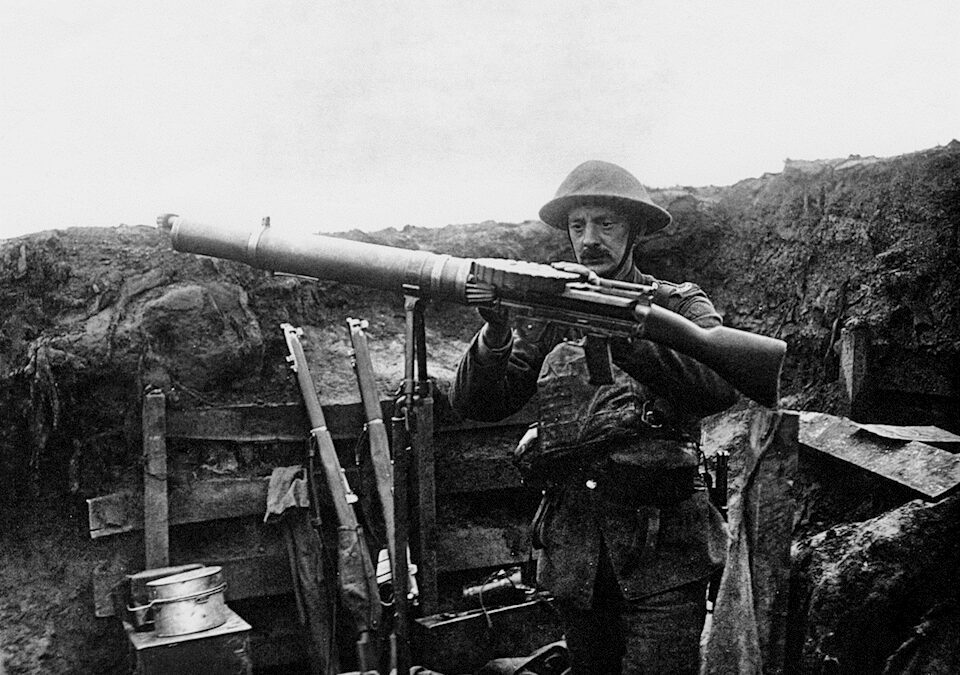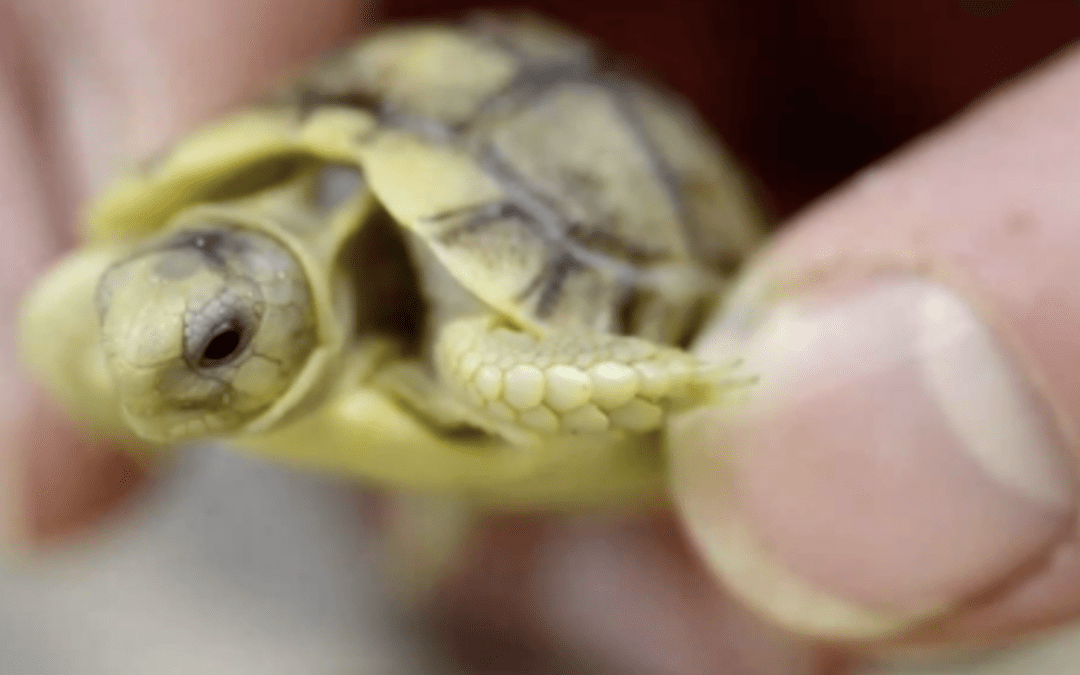This is the text of a talk that was given in February 2013 to the Ottoline Society – the academic discussion group for the Faculty of New College of the Humanities (NCH), named after the Bloomsbury society hostess and patroness Lady Ottoline Morrell, who lived nearly opposite the College (at 44 and 19 Bedford Square respectively).
The purpose of the Ottoline Society is to promote interdisciplinary discussion. The two disciplines on which I will draw in my talk today are literature and philosophy. I took inspiration from the taxi ride that I took exactly two weeks ago from Institute of Advanced Legal Studies to that interdisciplary forum, the Athanaeum: during that ride Supreme Court Justice Breyer said precisely this, and Anthony Grayling (Master of NCH), seemed to agree, that literature is a unique and distinguished medium of – forum for – (the metaphors matter) philosophy.
For example: four days ago, our very own Simon Blackburn (Visiting Professor of Philosophy at NCH) adduced the eighteenth chapter of the Gospel According to Saint John, in which Pilate asks Jesus what it is. The sentence reads: ‘And when he had said this, he went out again unto the Jews, and saith unto them, I find in him no fault at all.’
And I think that one of the things to say about this is that something is being presented about the nature of truth in this dramatic exchange. What Jesus and Pilate are engaged in is not a philosophical, not a Platanic, dialogue – but the scene as constituted by the Gospel writer, and read as art, is a treatment of the nature of truth. The non-response to his question is something for which we are not given the reason; we then have to parse the fact that it is followed by: ‘And when he had said this, he went out again unto the Jews, and saith unto them, I find in him no fault at all’
So the nature of this treatment of the nature of truth is between the abstract – philosophical discussion of the question of what truth is – and the concrete – what is described as having happened in that historical meeting between Jesus and Pilate.
One of the things that appeals to me about literature – and indeed any of the arts – as an subject of study is that it is more concrete than philosophy and more abstract than history. And though I would say that extreme care needs to be taken in the reading of history through it – by either historians or literary critics – it does allow philosophy to be done in a certain way, in that strange fictional realm between the absract and concrete where strange things, perhaps, can happen than can occur in either the world of pure thought, or of the world as it is.
Another respect in which it falls between is the relationship between the object, and the product, of study. That’s to say that literary criticism is in its nature closer to literature than historiography is to history, but further away from it than philosophy is to philosophy. And when it comes to the philosophical dimensions of literature, literary criticism acts in partnership with the literature, in bringing ideas into the light, or giving them harder edges. It’s in that kind of criticism that, in partnership with at least one or two of the examples on the handouts, that I’d like us to engage tonight.
The philosophy that we’ll be concerned with can perhaps best be described as philosophy in zero gravity.
When I was an undergraduate it struck me that to be a literary critic was to be as it were an astronaut. And I wasn’t entirely happy with this. It seemed that we could do summersaults, whereas the real muscular gymnasts were the philosophers, who had to act under the gravity of coherence or fact. But since then I’ve come to see the unique virtue in the kinds of gymnastic shapes one can describe in zero gravity.
Now it may be the case that the kind of problems of which literature is peculariarly interesting in its treatment, is problems which affect both the abstract and the concrete.
So the one which concerns us today is the problem of knowing the thing in itself.
It’s a problem for philosophy because of the difficulties of thinking something which is not the object of apprehension.
It’s a problem for science because the distortions produced by experimental method, by the very presence and intervention of the experimenter.
And I’ll say here that this is all assuming a realist position, which I’d like us for the sake of delimitation to do all evening.
In the early twentieth century, physics did seem to offer an opening to Berkeleyan idealism, but Einstein answered the question of whether, in the light of the Copenhagen interpretation of quantum mechanics, the moon is still there when it is not being observed, Einstein replied: ‘Of course’.
Four days ago, Simon Blackburn quoted two us the pair of limericks entitled ‘God in the Quad’, which summarises the position that outsources the ontologically-constitutive function of observation to God.
“Dear Sir: Your astonishment’s odd;
I am always about in the quad.
And that’s why the tree
Will continue to be
Since observed by, Yours faithfully, God.”
This is not an example of literature’s capacity to hold ideas in suspension.
Better would be this, from To the Lighthouse, on the handout [see below]:
‘Whenever she “thought of his work” she always saw clearly before her a large kitchen table. It was Andrew’s doing. She asked him what his father’s books were about. “Subject and object and the nature of reality,” Andrew had said. And when she said Heavens, she had no notion what that meant. “Think of a kitchen table then,” he told her, “when you’re not there.”
So now she always saw, when she thought of Mr Ramsay’s work, a scrubbed kitchen table. It lodged now in the fork of a pear tree, for they had reached the orchard. And with a painful effort of concentration, she focused her mind, not upon the silver-bossed bark of the tree, or upon its fish-shaped leaves, but upon a phantom kitchen table, one of those scrubbed board tables, grained and knotted, whose virtue seems to have been laid bare by years of muscular integrity, which stuck there, its four legs in air. Naturally, if one’s days were passed in this seeing of angular essences, this reducing of lovely evenings, with all their flamingo clouds and blue and silver to a white deal four-legged table (and it was a mark of the finest minds to do so), naturally one could not be judged like an ordinary person.’
We watch her thinking this thing that does not exist – a narrator who is not there and cannot exist, thinking it.
What literature has to offer to thinking through how the thing in itself can be known, unobserved, in a real universe, is that prose fiction very frequently describes things which are not being observed by any one. That one being a human observer, as opposed to what we call a fly on the wall.
There are many scenes which are observed in such a way.
So – fiction observes the unobserved: pillow talk. Historical conversations at which the people present are or are asserted to be known, and known not to include the raconteur. The movements of a person’s subconscious of which they, by definition, are themselves unaware. The conversations of God and his son, as in Paradise Lost, before human history began, and in which indeed in which that history was agreed upon as a venture.
So you could say that this kind of non-existence is true of all heterodiegetic (which is narratology for outside of the story) narrators.
But then one can object that the very positing of an outside of the story is to shrink the world of the story to a world within a world, which is how we often think of it – the fictional world as a subset of, and an entity within, the actual world which contains things like authors of and works of fiction. Hence talk of the omniscient narrator, who has God like qualities – like the God in quad observes and guarantees us, so the narrator observes and simultaneously constitutes the fictional world.
But this kind of analysis fails to make a distinction between different kinds of narrators.
Narrators have different degrees of palpability. George Eliot’s narrators famously resemble Marian Evans, as she presented herself to the world outside of her fiction, in intellect, moral attitude, diction and syntax, even in such cases when she adopts pointedly male narrative personas – one who is attracted to the female beauty amongst the characters – as in Scenes of Clerical Life and Adam Bede.
Such narrators have an imputed reality as personalities which places them, as it were, in our world – the real world – whilst the characters described are in the other. That a being in our world can see and describe the beings in the other world is a paradox which we simply accept, just as we do the imputed existence of that other world.
At the other end of the spectrum from this, we have the narrator as artist which, in Stephen Dedalus’s description of the artist towards the end of A Portrait of the Artist as a Young Man, ‘like the God of creation […] behind or beyond or above his handiwork, invisible, refined out of existence, indifferent, paring his fingernails’ – except that I would say that a being refined out of existence would emphatically have no fingernails to pare, nor would he or she be indifferent (since this implies the capacity for diffidence), nor would he or he be a he or a she.
It is like the camera in film, when it is not being focalised by a character.
Or like in paintings in which the subjects painted are not being observed, creating a closed system which in effect seals off the space or world of the painting from that of the beholder.
So, for example, in Dickens’s Bleak House, we have a heterodiegetic narrator who narrates in the present tense who is – especially by constant contrast with the homodiegetic narrator- protagonist Esther Summerson, who narrates the other half of the novel – without personality, without personhood. In relation to such a narrator, the very construct of the narrator seems an anthropomorphic fallacy. There is narration, by virtue of there being written words which denote events – but as little inducement as there could imaginably be to hypothesise a narrating self. In relation to Bleak House, therefore, one does not stand next to a narrator peering into the crystal ball of the novel to see what’s going on in there. There is only the world of the novel, since the narrator who isn’t participating in it, unlike Esther, isn’t outside of it either (like the status of the camera as being diegetic and heterodiegetic is extremely ambiguous).
Bleak House suddenly becomes part of our world; pari passu that means that we are living in the world of Bleak House, and this isn’t entirely comfortable.
Dickens knows that he is playing fast and loose with the fundamental convention of fiction here – that it is fiction. He acknowledges it by making no attempt whatever to make the novel’s composite narration coherent. The novel starts in the third person, and only moves on to Esther’s narration in chapter 3, with the words: ‘I have a great deal of difficulty in beginning to write my portion of these pages, for I know I am not clever.’
Her portion? So she and the non-existent narrator are in some kind of collaboration? They have signed a joint contract to describe selected events in London and Lincolnshire from the last twenty years? The relationship is not explained, because it cannot exist – and here we have an acknowledgment of the philosophical paradox involved in the supposedly absent position of all heterodiegetic narrators.
George Eliot, so often accused of un-self-consciously and liberally pouring her own wise-womanish persona into her narrators, was in fact equally conscious of the issue. And just as the novel as a genre showed its greatest self-consciousness in its early days, that’s to say in the eighteenth century, with Laurence Sterne, and the ‘editors’ of the epistolary novels – so Eliot shows her greatest self-consciousness early on in her career.
At the opening of her second novel, The Mill on the Floss, which is on the handouts [below], the narrator describes the landscape of the Floss valley, and then describes walking along the Floss itself. They – probably a he, given his freedom to walk alone in the country in 1860s England – feels the cold stone of the bridge on which he leans, and speculates on the thoughts of the cattle and cattle-herder he sees.
And then, suddenly, we get the following:
‘Ah, my arms are really benumbed. I have been pressing my elbows on the arms of my chair, and dreaming that I was standing on the bridge in front of Dorlcote Mill, as it looked one February afternoon many years ago. Before I dozed off, I was going to tell you what Mr. and Mrs. Tulliver were talking about, as they sat by the bright fire in the left-hand parlor, on that very afternoon I have been dreaming of.’
Now in fact this clears nothing up. When was the foregoing narrated? It was narrated as though we were strolling along with him, and he was speaking not writing. But now it is as though we are sitting with him in a parlour. Was the dream a waking or sleeping dream? And if he knew what Dorlcote Mill actually looked like ‘one February afternoon many years ago’, then he is a real person who cannot possibly have overheard the private conversation of a husband and wife in their left-hand parlour, which he proceeds to narrate at the beginning of chapter 2. That male, strolling, fleshly narrator is not, we should not suppose, hidden behind an arras. And were we to make a stab behind the arras – for most of the rest of the novel – no-one would cry out. It would be like piercing a ghost.
The conceit of the raconteur by the fireside is a trick, a feint – it fits no better with the omniscient narration of the rest of the novel than does the peripatetic narrator of the opening. What it does do is bring in the element of memory – the fireside narrator, unlike the present tense riverside narrator, purports to be remembering – and this is of course the implied conceit of most heterodiegetic narration, nearly all of which is narrated in the past tense. But to remember, one must first have experienced, so this doesn’t help us with the problem of presence-in-absence at all.
What such novels as Bleak House and The Mill on the Floss seem to do, then, is to confess that the fictions we construct in order to read fiction – such as the concept of a narrator who resembles a human, is capable of both describing a world which doesn’t exist, and communicating that description to us in our world which does, and who (in the case of The Mill) has a perfect memory for events which he/she did not record at the time, and at which they were not present – don’t work. They are incoherent in a way in which a fictional world, considered apart from the fact of its mediation by such narration, can be coherent. But the model of the crystal ball gazing doesn’t work. The fictional world does not have independent existence; it is tied to ours, and is a thought experiment within it. The absent observer is in fact a fiction, and the Ding an sich belongs in the realm of imagination, hovering between the abstraction of thought, and the concrete of reality.
So it is with fictional worlds. The Floss and Dorlcote Mill don’t exist. Bleak House is set in London, which exists, but the actual London of the 1850s is merely a template for the imaginary London which is inhabited by, for example, the various Jarndyces.
But it is different when a writer attempts to describe the real world – something which in prose would classify the work as non-fiction, but not when line endings are at stake, which is the case in poetry.
Now cases of self-consciousness about the paradoxes involved in the narration of fiction are by no means rare. But in a sense the problem of the absent narrator is less serious in relation to a fictional world.
On the other hand, most poetic personae do not purport to be absent from what they describe.
But occasionally they do, and then they are generally conscious of it. I would give as an example the ending of Shelley’s 1816 poem ‘Mont Blanc’
The poem is subtitled ‘Lines written in the Vale of Chamonix’ [see handout below]:
‘Mont Blanc yet gleams on high: – the power is there,
The still and solemn power of many sights,
And many sounds, and much of life and death.
In the calm darkness of the moonless nights,
In the lone glare of day, the snows descend
Upon that Mountain; none beholds them there,
Nor when the flakes burn in the sinking sun,
Or the star-beams dart through them: – Winds contend
Silently there, and heap the snow with breath
Rapid and strong, but silently! Its home
The voiceless lightning in these solitudes
Keeps innocently, and like vapour broods
Over the snow. The secret strength of things
Which governs thought, and to the infinite dome
Of heaven is as a law, inhabits thee!
And what were thou, and earth, and stars, and sea,
If to the human mind’s imaginings
Silence and solitude were vacancy?’
Mont Blanc had first been conquered in 1786 by Jacques Balmart and Michel-Gabriel Paccard. These lines are written ‘in the Vale of Chamonix’, looking up at Aiguille du Midi.
Today there is a camera there, twenty-four hours a day, streamed on one of the local television channels, available at the touch of a button.
In Shelley’s time, he knew that nobody was there.
In narratological terms, this is not just zero focalisation, but hypotheticalfocalization – as we see also in Stephen Rodefer’s fairly recent prose poem ‘Endscape’, about an entropic post-human landscape which concludes ‘Yesterday was a new day.’
Is there any difference between this and describing the Tullivers by their hearth, or – to take the most spectacular narrative intrusion into one of the most intensely solitary moments in human history – Jesus’s anguish in the Garden of Gethsamene?
I think that partly the point is that where any humans are, humans can be– which makes the hypothetical presence of the narrator a smaller paradox to swallow.
Likewise the description of anything made by humans – for example, the ruined monument to Ozymandias, seen by the traveller from an antique land, presumably in isolation, but in a place where humans were.
But it’s not just the fact of inaccessibility that makes cases such as ‘Mont Blanc’ distinct. It may or not be improper, as Pope implied, for man to study that which is not man – but it certainly involves distinct issues. Knowing the Ding an sich involves particular problems when the Ding concerned is a Ding what wasn’t made by man.
And amongst other things what Shelley is doing at the very end of the poem is questioning what is involved in knowing something of nature:
‘The secret strength of things
Which governs thought, and to the infinite dome
Of heaven is as a law, inhabits thee!
And what were thou, and earth, and stars, and sea,
If to the human mind’s imaginings
Silence and solitude were vacancy?’
The question is left open. Or how open it is is left open.
One proposition is that silence and solitude and snow are, in themselves, without observation, vacancy.
We see something similar in Wallace Stevens’s poem of a century later, ‘The Snow Man.’
The Snow Man
One must have a mind of winter
To regard the frost and the boughs
Of the pine-trees crusted with snow;
And have been cold a long time
To behold the junipers shagged with ice,
The spruces rough in the distant glitter
Of the January sun; and not to think
Of any misery in the sound of the wind,
Int he sound of a few leaves,
Which is the sound of the land
Full of the same wind
That is blowing in the same bare place
For the listener, who listens in the snow,
And, nothing himself, beholds
Nothing that is not there and the
nothing that is.
The Snow Man is an observer of the landscape, but is also of a piece with it. Here we have the position of the present-absent narrator who manages to overcome the paradox by being one with the landscape.
What ‘The Snow Man’ and ‘Mont Blanc’ have in common is that they describe snow – yet mind of summer would have to be just the same:
‘And what were thou, and earth, and stars, and sea’
The snow is just a helpful metaphor.
That is to say that what things are in themselves is vacant. Which is presumptuous. What do we know what it is like for Mont Blanc to be Mont Blanc? Just because dissolution of the self in unity with an object observed reduces the self qua self to blank whiteness, who is to say that this whiteness would not have projected upon it the potentially rainbow colours of non-human reality?
Birkin and Ursula argue in Women in Love:
‘But,’ she objected, ‘you’d be dead yourself, so what good would it do you?’
‘I would die like a shot, to know that the earth would really be cleaned of all the people. It is the most beautiful and freeing thought. Then there would neverbe another foul humanity created, for a universal defilement.’
‘No,’ said Ursula, ‘there would be nothing.’
‘What! Nothing? Just because humanity was wiped out? You flatter yourself. There’d be everything.’
‘But how, if there were no people?’
‘Do you think that creation depends on man! It merely doesn’t. There are the trees and the grass and birds.
To conclude: we need to keep reaching for the Ding an sich. As historians, for whom that which actually happened should, pace the post-structuralists, matter; as scientists; and, certainly not least, as creative writers and literary critics.
I would suggest that creative writers, who are concerned with describing reality through describing fiction, are particularly well placed to think and work through what is involved in doing this.
HANDOUT
[All text in bold editorial]
From To the Lighthouse
Whenever she “thought of his work” she always saw clearly before her a large kitchen table. It was Andrew’s doing. She asked him what his father’s books were about. “Subject and object and the nature of reality,” Andrew had said. And when she said Heavens, she had no notion what that meant. “Think of a kitchen table then,” he told her, “when you’re not there.”
So now she always saw, when she thought of Mr Ramsay’s work, a scrubbed kitchen table. It lodged now in the fork of a pear tree, for they had reached the orchard. And with a painful effort of concentration, she focused her mind, not upon the silver-bossed bark of the tree, or upon its fish-shaped leaves, but upon a phantom kitchen table, one of those scrubbed board tables, grained and knotted, whose virtue seems to have been laid bare by years of muscular integrity, which stuck there, its four legs in air. Naturally, if one’s days were passed in this seeing of angular essences, this reducing of lovely evenings, with all their flamingo clouds and blue and silver to a white deal four-legged table (and it was a mark of the finest minds to do so), naturally one could not be judged like an ordinary person.
From The Mill on the Floss
Chapter I Outside Dorlcote Mill
A wide plain, where the broadening Floss hurries on between its green banks to the sea, and the loving tide, rushing to meet it, checks its passage with an impetuous embrace. On this mighty tide the black ships–laden with the fresh-scented fir-planks, with rounded sacks of oil-bearing seed, or with the dark glitter of coal–are borne along to the town of St. Ogg’s, which shows its aged, fluted red roofs and the broad gables of its wharves between the low wooded hill and the river-brink, tingeing the water with a soft purple hue under the transient glance of this February sun. Far away on each hand stretch the rich pastures, and the patches of dark earth made ready for the seed of broad-leaved green crops, or touched already with the tint of the tender-bladed autumn-sown corn. There is a remnant still of last year’s golden clusters of beehive-ricks rising at intervals beyond the hedgerows; and everywhere the hedgerows are studded with trees; the distant ships seem to be lifting their masts and stretching their red-brown sails close among the branches of the spreading ash. Just by the red-roofed town the tributary Ripple flows with a lively current into the Floss. How lovely the little river is, with its dark changing wavelets! It seems to me like a living companion while I wander along the bank, and listen to its low, placid voice, as to the voice of one who is deaf and loving. I remember those large dipping willows. I remember the stone bridge.
And this is Dorlcote Mill. I must stand a minute or two here on the bridge and look at it, though the clouds are threatening, and it is far on in the afternoon. Even in this leafless time of departing February it is pleasant to look at,–perhaps the chill, damp season adds a charm to the trimly kept, comfortable dwelling-house, as old as the elms and chestnuts that shelter it from the northern blast. The stream is brimful now, and lies high in this little withy plantation, and half drowns the grassy fringe of the croft in front of the house. As I look at the full stream, the vivid grass, the delicate bright-green powder softening the outline of the great trunks and branches that gleam from under the bare purple boughs, I am in love with moistness, and envy the white ducks that are dipping their heads far into the water here among the withes, unmindful of the awkward appearance they make in the drier world above.
The rush of the water and the booming of the mill bring a dreamy deafness, which seems to heighten the peacefulness of the scene. They are like a great curtain of sound, shutting one out from the world beyond. And now there is the thunder of the huge covered wagon coming home with sacks of grain. That honest wagoner is thinking of his dinner, getting sadly dry in the oven at this late hour; but he will not touch it till he has fed his horses,–the strong, submissive, meek-eyed beasts, who, I fancy, are looking mild reproach at him from between their blinkers, that he should crack his whip at them in that awful manner as if they needed that hint! See how they stretch their shoulders up the slope toward the bridge, with all the more energy because they are so near home. Look at their grand shaggy feet that seem to grasp the firm earth, at the patient strength of their necks, bowed under the heavy collar, at the mighty muscles of their struggling haunches! I should like well to hear them neigh over their hardly earned feed of corn, and see them, with their moist necks freed from the harness, dipping their eager nostrils into the muddy pond. Now they are on the bridge, and down they go again at a swifter pace, and the arch of the covered wagon disappears at the turning behind the trees.
Now I can turn my eyes toward the mill again, and watch the unresting wheel sending out its diamond jets of water. That little girl is watching it too; she has been standing on just the same spot at the edge of the water ever since I paused on the bridge. And that queer white cur with the brown ear seems to be leaping and barking in ineffectual remonstrance with the wheel; perhaps he is jealous because his playfellow in the beaver bonnet is so rapt in its movement. It is time the little playfellow went in, I think; and there is a very bright fire to tempt her: the red light shines out under the deepening gray of the sky. It is time, too, for me to leave off resting my arms on the cold stone of this bridge….
Ah, my arms are really benumbed. I have been pressing my elbows on the arms of my chair, and dreaming that I was standing on the bridge in front of Dorlcote Mill, as it looked one February afternoon many years ago. Before I dozed off, I was going to tell you what Mr. and Mrs. Tulliver were talking about, as they sat by the bright fire in the left-hand parlor, on that very afternoon I have been dreaming of.
Chapter II Mr. Tulliver, of Dorlcote Mill, Declares His Resolution about Tom
“What I want, you know,” said Mr. Tulliver,–”what I want is to give Tom a good eddication; an eddication as’ll be a bread to him.
George Eliot, 1860
From ‘Mont Blanc: Lines Written in the Vale of Chamonix’
Mont Blanc yet gleams on high: – the power is there,
The still and solemn power of many sights,
And many sounds, and much of life and death.
In the calm darkness of the moonless nights,
In the lone glare of day, the snows descend
Upon that Mountain; none beholds them there,
Nor when the flakes burn in the sinking sun,
Or the star-beams dart through them: – Winds contend
Silently there, and heap the snow with breath
Rapid and strong, but silently! Its home
The voiceless lightning in these solitudes
Keeps innocently, and like vapour broods
Over the snow. The secret strength of things
Which governs thought, and to the infinite dome
Of heaven is as a law, inhabits thee!
And what were thou, and earth, and stars, and sea,
If to the human mind’s imaginings
Silence and solitude were vacancy?
Percy Bysshe Shelley, 1816
Endscape
…the last surge of color settled to rest. Squarish pools murmured under their stanchions, making a movement that was almost another color. Rocks nearby kept their seeming repose a trifle out of sight. Some little thing made as though to sidle onto one of them in another minutes, then it remained still. Then there seemed that there was nothing there. Where a faint humming rose, reminiscent of some previous enactment, long ceased, after an immeasurable duration, over against the back of everything, a disintegrating bank slid silently into the fosse – for a moment a floating hunk of some evidence no longer to be recorded or guessed at. Then it too was gone.
The night this night was the same night as before. Tomorrow the night would rummage through the same scene, as it has always done. Yesterday was a new day.
Stephen Rodefer
The Snow Man
One must have a mind of winter
To regard the frost and the boughs
Of the pine-trees crusted with snow;
And have been cold a long time
To behold the junipers shagged with ice,
The spruces rough in the distant glitter
Of the January sun; and not to think
Of any misery in the sound of the wind,
Int he sound of a few leaves,
Which is the sound of the land
Full of the same wind
That is blowing in the same bare place
For the listener, who listens in the snow,
And, nothing himself, beholds
Nothing that is not there and the
nothing that is.
Wallace Stevens, 1921
From Women in Love
‘So you’d like everybody in the world destroyed?’ said Ursula.
‘I should indeed.’
‘And the world empty of people?’
‘Yes truly. You yourself, don’t you find it a beautiful clean thought, a world empty of people, just uninterrupted grass, and a hare sitting up?’
The pleasant sincerity of his voice made Ursula pause to consider her own proposition. And really it wasattractive: a clean, lovely, humanless world. It was the really desirable. Her heart hesitated, and exulted. But still, she was dissatisfied with him.
‘But,’ she objected, ‘you’d be dead yourself, so what good would it do you?’
‘I would die like a shot, to know that the earth would really be cleaned of all the people. It is the most beautiful and freeing thought. Then there would neverbe another foul humanity created, for a universal defilement.’
‘No,’ said Ursula, ‘there would be nothing.’
‘What! Nothing? Just because humanity was wiped out? You flatter yourself. There’d be everything.’
‘But how, if there were no people?’
‘Do you think that creation depends on man! It merely doesn’t. There are the trees and the grass and birds. I much prefer to think of the lark rising up in the morning upon a human-less world. Man is a mistake, he must go. There is the grass, and hares and adders, and the unseen hosts, actual angels that go about freely when a dirty humanity doesn’t interrupt them–and good pure-tissued demons: very nice.’
It pleased Ursula, what he said, pleased her very much, as a phantasy. Of course it was only a pleasant fancy. She herself knew too well the actuality of humanity, its hideous actuality. She knew it could not disappear so cleanly and conveniently. It had a long way to go yet, a long and hideous way. Her subtle, feminine, demoniacal soul knew it well.
‘If only man was swept off the face of the earth, creation would go on so marvellously, with a new start, non-human. Man is one of the mistakes of creation- like the ichthyosauri. If only he were gone again, think what lovely things would come out of the liberated days;–things straight out of the fire.’
‘But man will never be gone,’ she said, with insidious, diabolical knowledge of the horrors of persistence. ‘The world will go with him.’
‘Ah no,’ he answered, ‘not so. I believe in the proud angels and the demons that are our fore-runners. They will destroy us, because we are not proud enough. The ichthyosauri were not proud: they crawled and floundered as we do. And besides, look at elder-flowers and bluebells–they are a sign that pure creation takes place–even the butterfly. But humanity never gets beyond the caterpillar stage—it rots in the chrysalis, it never will have wings. It is anti-creation, like monkeys and baboons.’
D.H. Lawrence, 1919
Gary Larson

